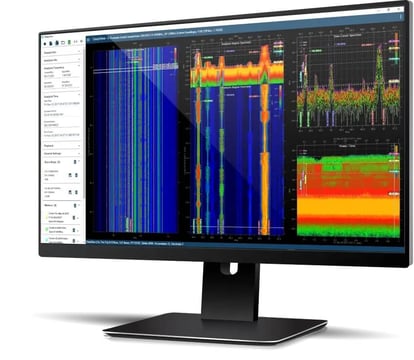
CRFS developed RFeye DeepView specifically for signal analysts, EW operators, and RF test engineers. The latest software update (DeepView 2.4) includes several powerful new features. Users can now add multiple Nodes, stream I/Q data to third-party apps using VITA-49, and trigger Nodes through GPS timing. Finding unknown or unexpected RF signals is easier, and users can now turn raw data into actionable intelligence.
Here are the four most powerful updates for DeepView 2.4.
1. Support for all RFeye Nodes, SenS Remote and SenS Portable devices
RFeye DeepView 2.2.7 permitted one RFeye SenS Portable or SenS Remote device to be connected via cable.
RFeye DeepView 2.4 continues to function with RFeye SenS devices; however, the software update also allows users to add multiple RFeye Nodes—potentially forming a remote network with sensors kilometers apart. Multiple RFeye Nodes bring wider visibility as monitoring a border spectrum area becomes possible.
Users can now expand their DeepView operations, employing the software as part of one integrated ecosystem with all their RFeye equipment. Of course, there will always be network limitations, but the only limitation to adding Nodes is the performance of the user’s laptop and the backhaul data rate—it is not limited by the DeepView software.
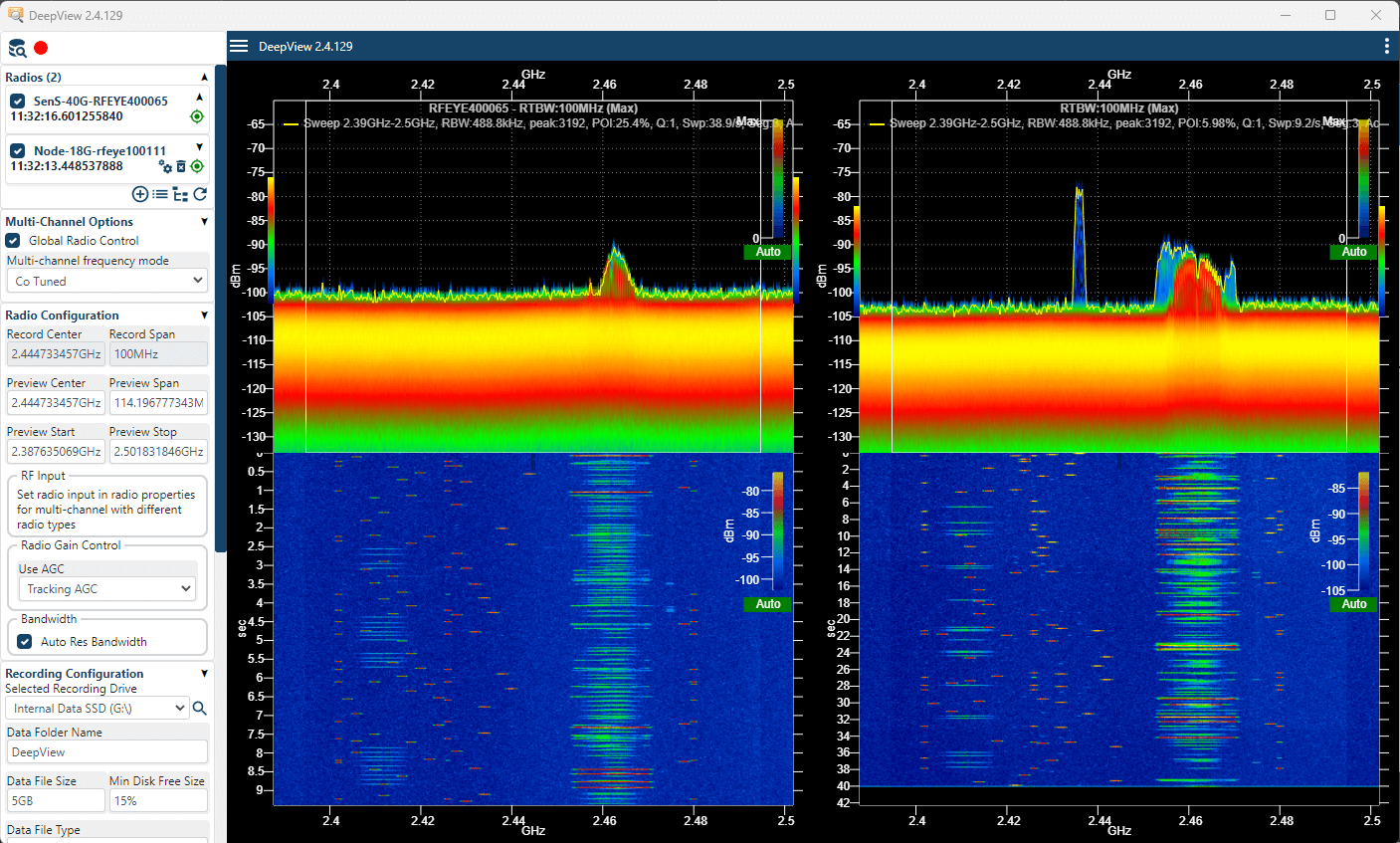
Figure 1: DeepView 2.4 shows live spectrum from a Node and a SenS Portable
2. Stream and export I/Q data in VITA-49
While users could previously export I/Q data as a file, RFeye DeepView 2.4 allows you to import, export, and stream VITA-49 format directly into a third-party application.
The software update gives users TCP and UDP networking options from which to stream the data from RFeye DeepView. This allows users to configure the network to match their application needs.
As VITA-49 is a standardized protocol for formatting and encapsulating I/Q data, it ensures that I/Q data can be exchanged and used across different SDR hardware, software, and applications, regardless of the manufacturer.
RFeye DeepView 2.4 allows users to record I/Q data from (potentially multiple) Nodes to storage while simultaneously streaming it to a third-party application.
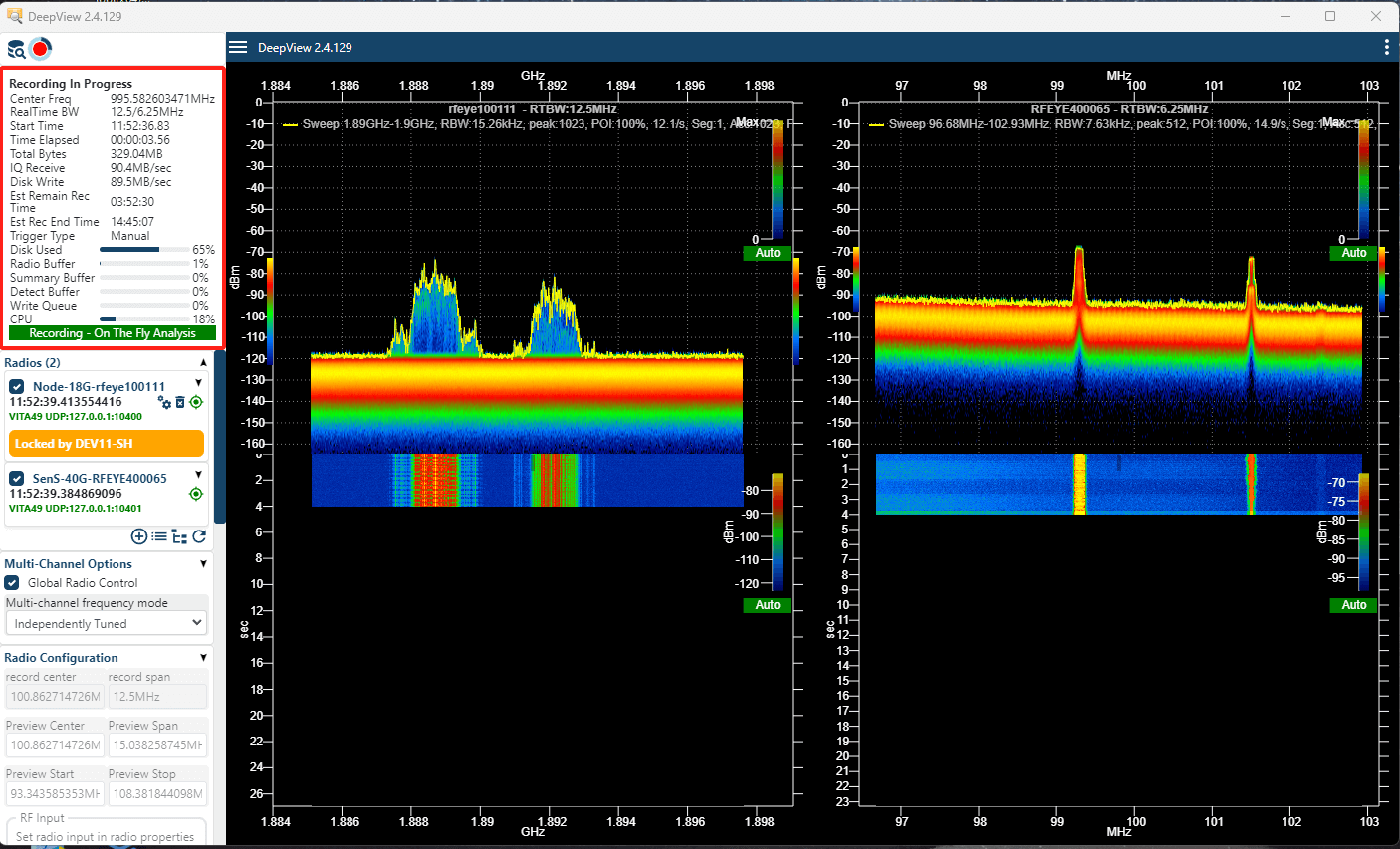
Figure 2: Recording I/Q data
3. Trigger a recording using GPS time
RFeye DeepView 2.2.7 gave users the option to trigger a recording manually or by using mask breaks. The latest version of the software now offers absolute time triggering. This feature permits users to record I/Q data at a specific time in the future, capturing the signal of interest without manually monitoring input. Time can be set using either the local time or the GPS time.
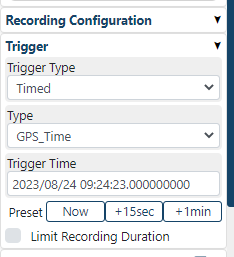
Figure 3: GPS Triggered timed recoding
4. Multi-channel analysis
The new 'scale linking' feature gives users the option to link the time, frequency, and amplitude scales so they work synchronously. When carrying out detailed measurements, this feature permits users to make relative measurements between Nodes. If needed, scales can be reset, empowering the DeepView user to fine-tune their experience.
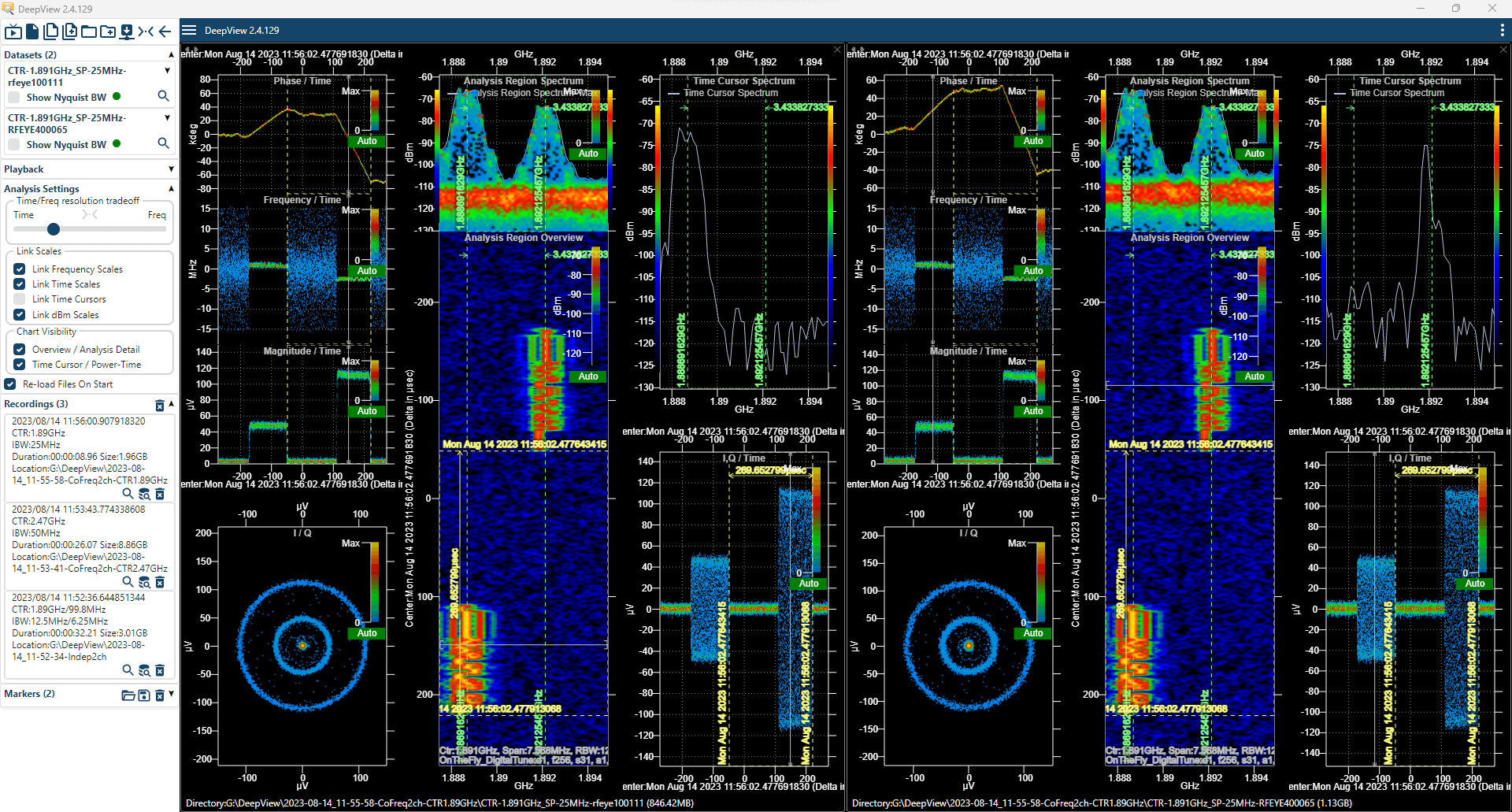
Figure 4: Data from two Nodes shown in parallel
Multi-radio features
- Global Radio control: enabling Global Radio Control allows the Radio Configuration panel to control all radios together. When Global Radio Control is disabled, each radio must be configured individually using the radio’s Capture Settings menu.
- Radios independently tuned: allows users to analyze different signals simultaneously, meaning different radios can analyze different parts of the spectrum.
- Co-tuned: allows users to make multiple radios analyze the same signal.
- Stacked frequency: the radios are contiguous in terms of their frequency.
Conclusion
The RFeye DeepView 2.4 software upgrade has many practical benefits for signal analysts, EW operators, and RF test engineers.
First, RFeye DeepView is no longer limited to use with a single SenS unit; it can now connect to multiple RFeye Nodes and SenS units (SenS Portable and SenS Remote). This allows signals to be recorded and compared side-by-side. Second, VITA-49 is an industry standard for I/Q data, which allows the streaming of signals from Nodes and RFeye SenS units into third-party decoding software. This greatly enhances the functionality of RFeye Nodes and SenS units for signals intelligence missions. Third, time-triggered recording allows users to trigger a recording in the future without having to be present to do so. Last, users can make relative measurements between scales for multiple channels.
Jaimie Brzezinski
Jaimie Brzezinski is Head of Content for CRFS. His specialty is turning highly technical ideas into engaging narratives. He has 15+ years of experience in writing technical content and building global teams of subject matter experts.
